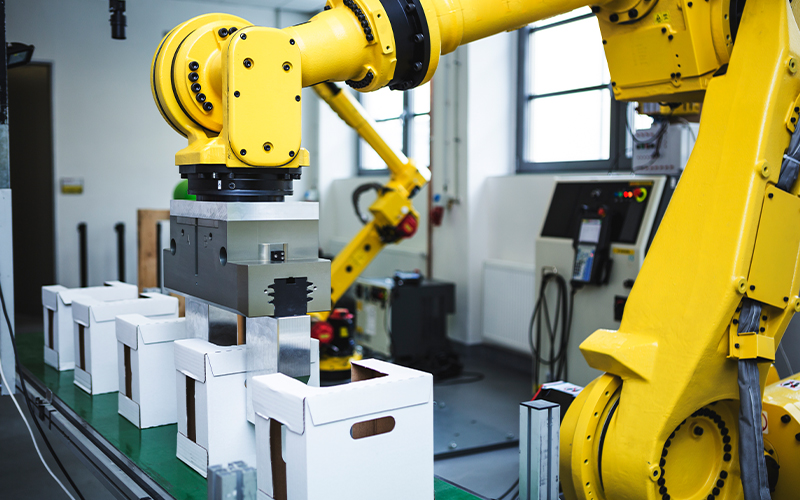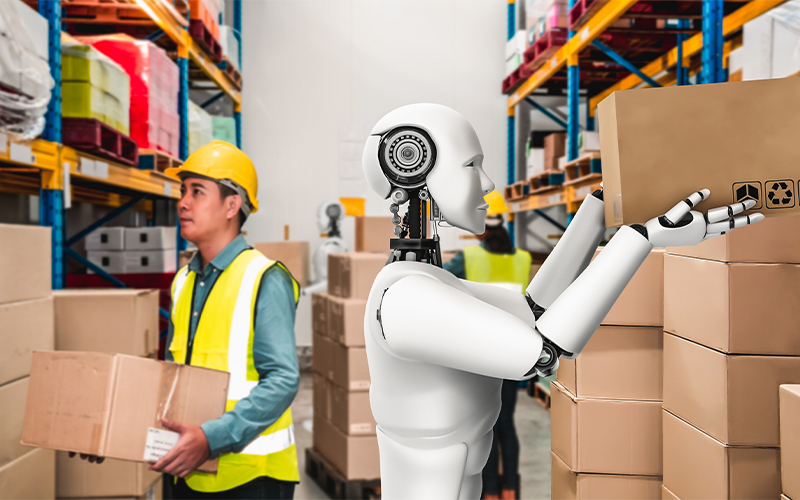BUSINESS TRANSFORMATION
Boost your digital transformation with data analytics
Over the years, new digital technologies have driven radical changes in customer behaviour. Those businesses that adapt will thrive, while others risk extinction. What does it mean “to adapt”? Does it imply the deployment of cutting-edge digital tools? Or, is there more to it? The fact is, leveraging computer-based technologies is just one aspect of adapting. The larger part consists of rethinking business models, revising internal operations, and bringing about a shift in mindsets.
The umbrella term that encompasses all of these is “digital transformation”. In effect, digital transformation is a process that leverages new-age IT technologies to transform business processes or create novel ones to meet evolving market and customer needs.
Some examples of digital transformation are: cloud CRM replacing spreadsheets, in-person training making way for e-learning and other such replacements. Every new innovation brings new trends on this journey of transformation.
Digital transformation trends today
5G and IoT
Cloud computing
Hyper-automation
Data-driven business management
5G is the fifth generation of mobile network technology. It is known for speed, low latency, better connectivity and improved bandwidth. IoT is the ecosystem of connected computing devices and digital machines.
When the two work in tandem, there is a broad spectrum of uses: smart cities, remote healthcare management, connected automobiles, accident management, etc.
With 5G and IoT, more innovative mobile applications can become a reality leading to enhanced user experience.
Cloud computing has been steadily gaining popularity in recent years. By allowing easy storage of large amounts of data and accessibility from anywhere in the world, the cloud has fostered better collaboration on projects.
Organisations are also able to better focus on new development opportunities since the burden of maintaining hardware infrastructure has lifted.
Going forward, the trend is to use multi-cloud solutions, that is, to use multiple public clouds instead of a single cloud service provider. This arrangement has benefits of better data security, more flexibility and easier migration among service providers when needed.
Cloud technology has helped businesses cut travel and infrastructure costs, and reap the benefit of increased employee efficiency.
Businesses are no strangers to automation. Hyper-automation is the next logical step in on the automation development track and is one of the digital transformation trends of 2022 paving way to hyper-productivity*.
How does hyper-automation work? Essentially, it uses artificial intelligence (AI), machine learning (ML), and robotic process automation (RPA) to analyse, optimise, and improve business processes. Additionally, hyper-automation can observe the details and nuances of background processes, enabling data-driven decision-making and better understanding of business processes.
Digital technologies generate massive amounts of data. It is possible to gain valuable business insights from this data if it is handled properly. Enhanced technologies with Machine Learning (ML) and Artificial Intelligence (AI) have transformed the way data is handled.
More and more companies are relying on AI and ML to make predictions about upcoming trends, prepare actionable strategies, and keep up with the dynamic market as they shift to data-driven business management.
Even growing businesses have started investing in AI and ML tools as they have become more accurate with time.
The critical role of data in digital transformation
-
There's more to the quote, "Data is the new oil", than meets the eye. There are a number of benefits that enterprises can derive from data-driven digital transformation, such as:
Better insights for maximising profit at minimal risk
Consider business diversification possibilities
Vitalise business processes
To do their job, predictive analytical tools use input data to detect emerging threats and provide insights about future market scenarios. BI tools step in at this point to draw up strategies that maximise profits while minimising risk.
The COVID-19 pandemic is a testament to the fact that businesses that are adaptable thrive, and diversification is one way that businesses can adapt. The study of data can help businesses identify emerging trends and opportunities. Their exploration of these trends could lead them to enter new markets, diversify their product and service offerings, or switch business priorities.
Technologies for data processing have the capability to sift through vast amounts of information and discover problems in business processes. For example, the technologies may highlight issues with resource usage, poor data quality, data stored in silos and other such relevant scenarios. As a result, businesses can implement improvement tactics that boost their bottom lines.
It is impossible to overstate the importance of data in the digital transformation. Every business wants to make wise choices that will enhance customer experience, boost profitability, and promote their brand. Therefore, businesses need to create a digital transformation plan that combines data strategy with digital technology. An attempt at digital transformation would be unsuccessful without both. The digital transition has been welcomed by numerous businesses. Have you welcomed it too?
*For organizations on the digital transformation journey, agility is key in responding to a rapidly changing technology and business landscape. Now more than ever, it is crucial to deliver and exceed on organizational expectations with a robust digital mindset backed by innovation. Enabling businesses to sense, learn, respond, and evolve like a living organism, will be imperative for business excellence going forward. A comprehensive, yet modular suite of services is doing exactly that. Equipping organizations with intuitive decision-making automatically at scale, actionable insights based on real-time solutions, anytime/anywhere experience, and in-depth data visibility across functions leading to hyper-productivity, Live Enterprise is building connected organizations that are innovating collaboratively for the future.







